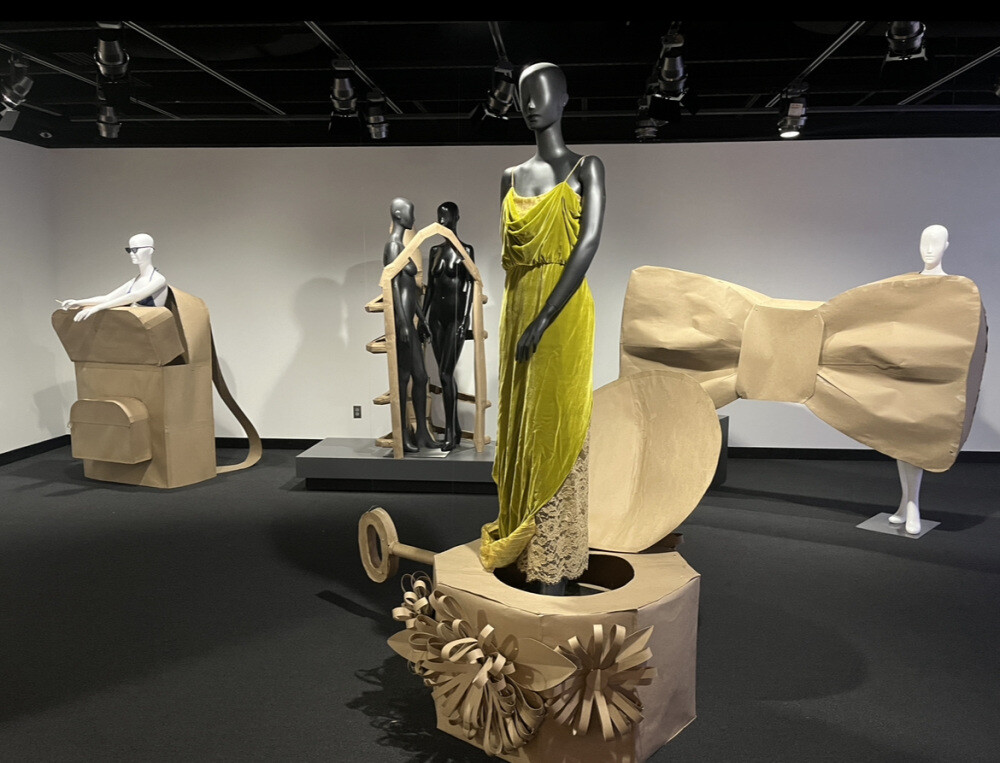
Michael Burton, assistant professor, gave students in his Visualization Studio the theme of “Enlarging the Ordinary” as they created giant wearable art made from chipboard.
The creations by the Textiles, Merchandising and Fashion Design students make up the new exhibition on display at the Robert Hillestad Textiles Gallery through Jan. 26, 2024.
“Similar to apparel design where 2D materials are transformed into clothing, this project teaches students how to convert something flat into a completely different 3D form,” Burton said. “They learn basic structural engineering, project management, and concept development. Is there a story when an ordinary object is blown up 20 times its size? What happens when that object connects two people together?”
Students were given hundreds of sheets of chipboard, a thin cardboard material, gallons of Elmer’s glue, button tacks, and paper tape. Burton guided them through the process with a series of short challenges meant to prepare them for making their visions a reality.
First, students learned ways to sketch the human form in different poses. Students were body scanned and imported into motion capture software that allowed them to be virtually posed. They then learned to express their ideas with 3D models, followed by a presentation of their plan to the class.
Burton demonstrated a variety of ways to create organic forms with chipboard. He also showed students how to create structural supports and make large 3D forms quickly.
The students worked in teams for the three-week project. Their finished projects were photographed with students “wearing” their art. They then installed the exhibition at the Hillestad Gallery.
The Robert Hillestad Gallery is part of the Department of Textiles, Merchandising and Fashion Design in the College of Education and Human Sciences. It is located on the second floor of the Gwendolyn A. Newkirk Human Sciences Building, and is open to the public 8:30 a.m. to 4:30 p.m. weekdays.







